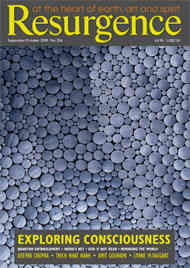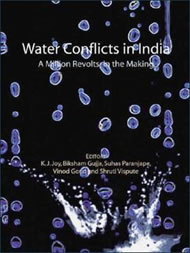Kolleru in Andhra Pradesh is one of Asia’s largest freshwater lakes; it is designated as a wetland site of international importance and provides habitat for the vulnerable grey pelican. Seventy-five villages fringe the lake, and for many years birds, people and water have coexisted in harmony. In the 1990s, ‘outsiders’ entered the scene to farm prawns. These require saline water, and boreholes were sunk in the lake bed to pump salt water into fish ponds. The prawns are fed on chemical fertilisers, chicken waste and manure: once the harvest is over the water stagnates and pollutes the lake.
There are now frequent wild fish kills, safe drinking water is scarce and the groundwater is contaminated. The fish contain pesticides and are unfit for human consumption. Ironically, people living next to the largest freshwater lake in India now have to buy packaged water. The lake is dead. A High Court Order was passed in 2001 to bring the lake back to its former glory but it has yet to be implemented: an official tasked with sorting out land and water rights was murdered on his evening stroll the day before he was due to deliver his report.
This is one abridged story of over sixty that are told in Water Conflicts in India. We could have hoped that, half a century after Rachel Carson wrote Silent Spring and heralded the coming of the new age of environmentalism, we should be reading about solutions rather than conflicts in the water wars of India. So it was with some apprehension that I approached this book. To be sure, the dust jacket does indeed promise that the book makes a “contribution to conflict resolution” but the weight of the text is firmly focused on such case examples as that of Kolleru which highlight the conflicts themselves.
More trepidation followed when I realised that the book comprised a collection of papers largely arising from a conference. Such volumes often herd contributions together with little structure and no index. But this collection is greater than the sum of its parts. The volume has been skilfully structured and edited and cases are grouped around a number of themes, with each theme – from ‘Contending Water Uses’ to ‘Privatisation’ – being introduced and reviewed. It is in these sections that ‘Lessons Learnt’ are suggested. Given this structure, the lack of an index is not too great a handicap, and if only the key map of case studies had been legible (the editors do apologise for this!), the book would have been much more navigable. But the case studies are so enticingly titled: ‘A Toxic Hotspot on the River Periyar: Corporate Crimes in God’s Own Country’, or how about ‘The Tehri Dam: a Saga of Shattered Dreams’? The great thing about the case studies is that they are focused, pithy and to the point. So it is possible to dip in as the subjects stir your interest.
Water Conflicts was supported by WWF and eight Indian institutions representing the Forum for Policy Dialogue on Water Conflicts in India. There are over ninety authors, and the case studies are reviewed by eminent practitioners. The contributors range from academics and campaigners to lawyers and farmers; indeed, the steering committee that oversaw the book’s preparation included ‘progressive’ farmers as well as scientists. In his Foreword, A. Vaidyanathan, a former member of the Planning Commission of India and Emeritus Professor at the Madras Institute of Development Studies in Chennai, recognises that, while the papers give clues to how conflicts can be resolved, proposed solutions are far from being effective. He cites, for example, the non-involvement of users in making arrangements for water distribution, the ineffectiveness of judicial processes, and weak institutions and enforcement.
Water Conflicts offers a potpourri of cases where, sadly, much work remains to be done. We should look forward in hope to Water Solutions. To get there, as the editors imply, we need to create space for dialogue; otherwise, they maintain, rivers will continue to divide us, emotionally and politically. What Water Conflicts demonstrates is that there is no room for complacency. The families of the fishermen of Lake Kolleru are testament to that.








